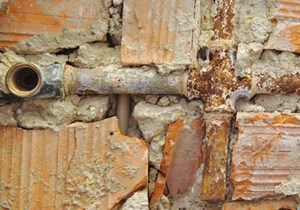EPA: 9.2 million homes in U.S. have lead pipes, issues funding to upgrade water infrastructure
(AP) – Some 9.2 million lead pipes carry water into homes across the U.S., with more in Florida than any other state, according to a new Environmental Protection Agency survey that will dictate how billions of dollars to find and replace those pipes are spent.

The survey released Tuesday was the first time the agency asked about lead pipes and gave the best count yet of how many are underground. Florida, with an estimated 1.16 million pipes, was a surprise to one expert. Industrial states like Ohio, Michigan and Pennsylvania are more typically associated with extensive lead pipe issues.
Illinois ranked second in Tuesday’s survey, with 1.04 million lead pipes, followed by Ohio, Pennsylvania, Texas and New York.
The agency’s drinking water infrastructure survey will be used to steer billions of dollars from the Bipartisan Infrastructure Law to water infrastructure upgrades like finding and removing lead pipes in states that need it most. Previously, a state’s share of lead pipe funds was based on its general infrastructure need and didn’t consider how many lead pipes the state had.
Lead can cause brain damage and the EPA says no amount is safe for children’s bodies. The Biden administration has set a goal to remove all of the country’s lead water pipes. The $15 billion from the infrastructure law for lead pipe work will significantly help, but it won’t be enough, to solve the problem.
“Every community deserves access to safe, clean drinking water,” said EPA Administrator Michael Regan who was in Illinois for the announcement. “Thanks to President Biden’s infrastructure investments, we have an unprecedented opportunity to revitalize America’s drinking water systems, support the Biden-Harris administration’s goal of removing 100% of lead pipes across our country, and protect communities from PFAS pollution.”
The EPA recently proposed drinking water limits for PFAS, or per- and polyfluoroalkyl substances often called “forever chemicals,” in a push that the agency said will save lives and reduce illness but will require many water providers to install costly treatment systems.
The EPA’s survey of roughly 3,500 water providers also found the country needs to spend $625 billion on drinking water infrastructure over the next two decades, an amount that’s increased sharply in recent years. The biggest need is upgrading water pipes that are too old, broken or in some cases, made of lead.
On Tuesday, the EPA also announced states, U.S. territories and tribes will have $6.5 billion to upgrade drinking water infrastructure, with $6 billion of that total coming from the Bipartisan Infrastructure Law.
The lead water crisis in Flint, Michigan, made lead in drinking water a national concern and demonstrated how old pipes can quickly become an urgent public health threat. Newark, New Jersey, saw prolonged lead water problems that led to rapid replacement of thousands of lead pipes, as did Benton Harbor, Michigan.
Erik Olson, a health and food expert at the environmental group Natural Resources Defense Council, said the EPA was “trying to do the right thing” by using its survey to direct lead pipe funds to states that need it most. But he called Florida’s figure “a big surprise.” Olson said the state told his group in 2021 that it doesn’t track lead service lines. The NRDC’s estimate for the state was about 200,000.
Related News
From Archive

- Glenfarne Alaska LNG targets late-2026 construction start for 807-mile pipeline project
- U.S. water reuse boom to fuel $47 billion in infrastructure spending through 2035
- $2.3 billion approved to construct 236-mile Texas-to-Gulf gas pipeline
- Major water pipe break in Puerto Rico hits over 165,000 customers
- Potomac River Tunnel project enters construction phase beneath Washington, D.C.
- Pennsylvania American Water launches interactive map to identify, replace lead water service lines
- Trump's tariffs drive $33 million cost increase for Cincinnati sewer project
- Utah city launches historic $70 million tunnel project using box jacking under active rail line
- Tulsa residents warned after sewer lines damaged by boring work
- Fatal trench collapse halts sewer construction in Massachusetts; two workers hospitalized



Comments